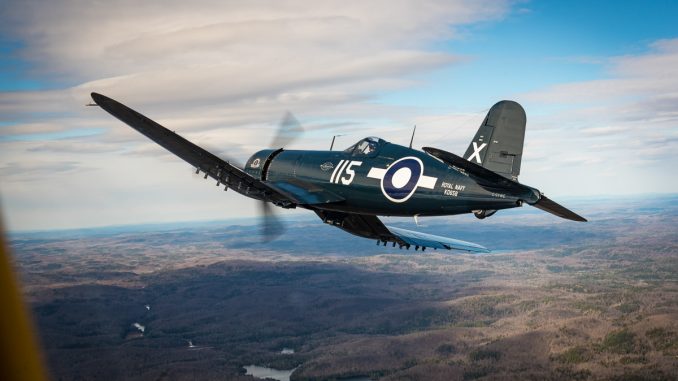
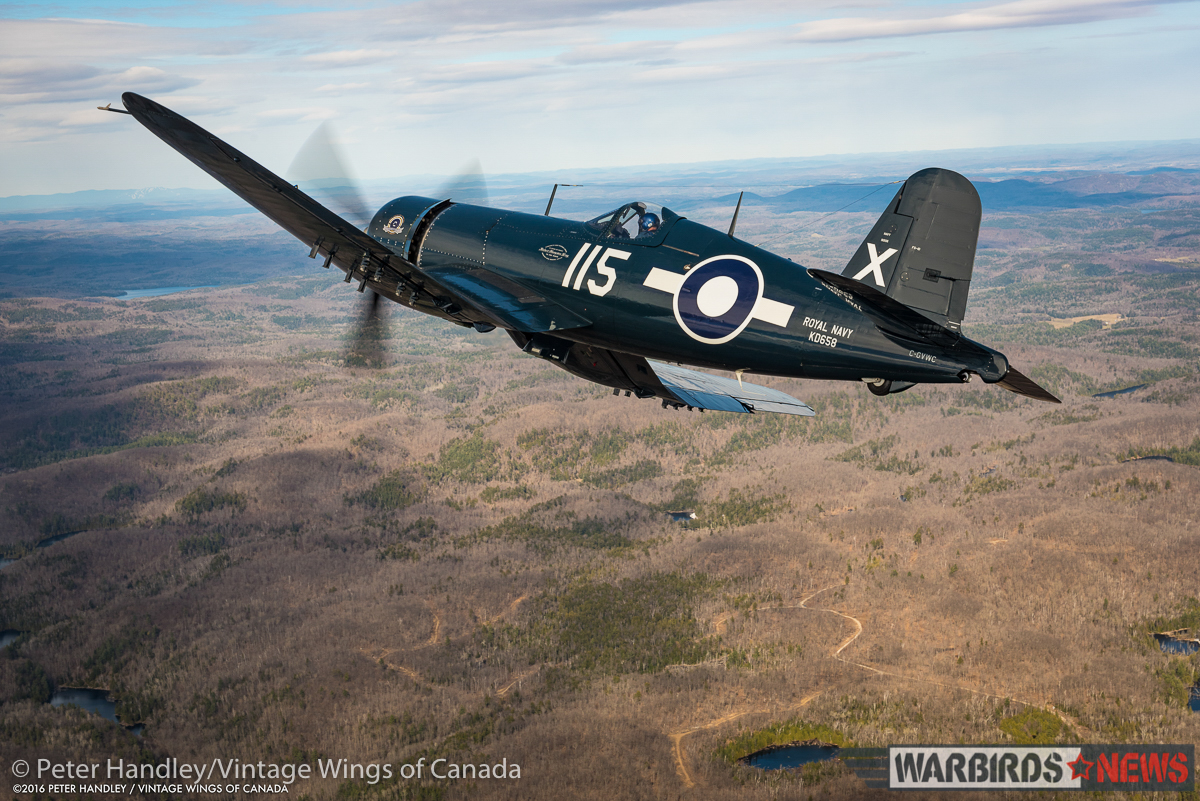
As many readers will be well aware, Vintage Wings of Canada recently re-flew their FG-1D Corsair after a three-year operational hiatus. Flying a vintage warbird after such a long time spent in the hangar requires a great deal of vigilance, not just on the part of the maintenance crew, but also of the pilot who takes her aloft. Vintage Wings of Canada is a world-class operation, and has built an enviable reputation for excellence in the warbird arena. Part of this is due to their highly experienced pilot cadre, a number of whom are test pilots within the National Research Council, based in Ottawa, Ontario, just a few minutes flight-time from Vintage Wings home at Gatineau-Ottawa Executive Airport in Gatineau, Quebec. These pilots, many of them former Canadian military, have to fly a significant range of aircraft within the NRC fleet in a dramatically disparate range of flight regimes, making them eminently qualified to fly any of the high performance warbirds in the Vintage Wings of Canada collection.
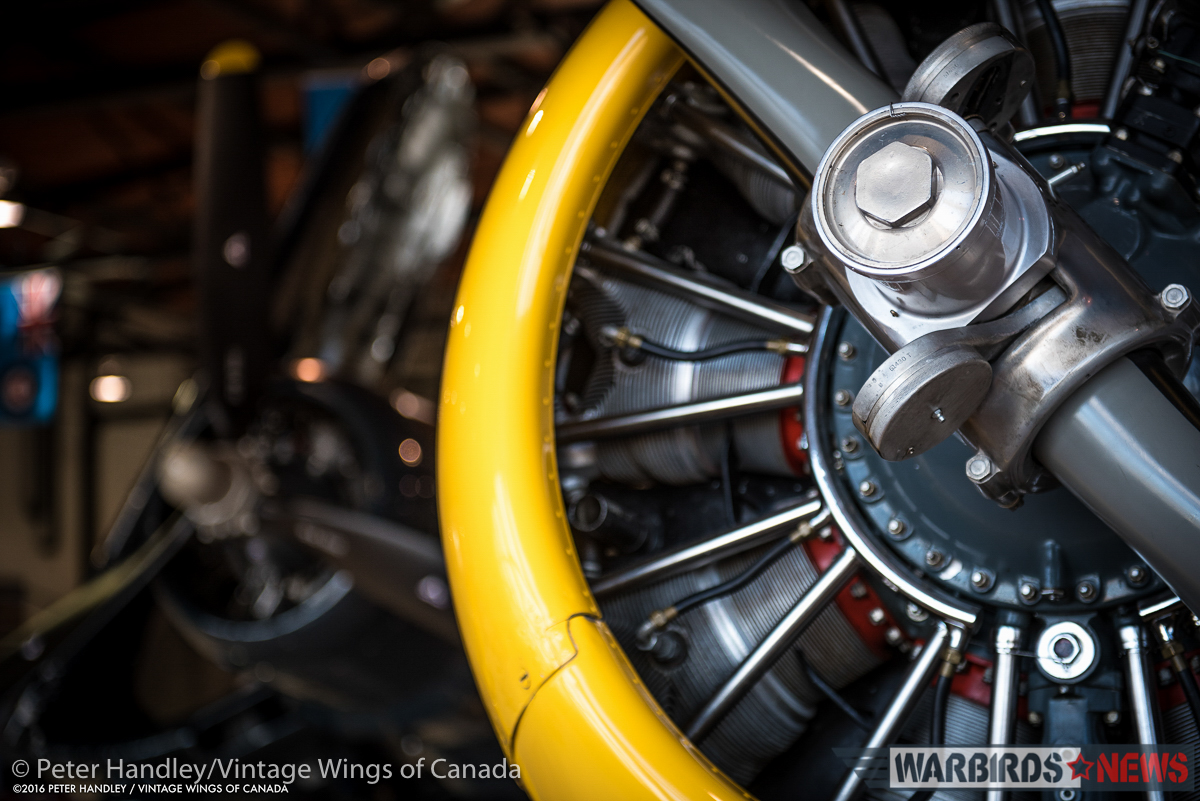
Veteran NRC test and Vintage Wings of Canada warbird pilot, Paul Kissman, was the man who recently took their FG-1D aloft on her first post-maintenance flight, and WarbirdsNews asked him to talk a little about the experience. He gave us some detailed and fascinating responses, and we know you will enjoy reading them!
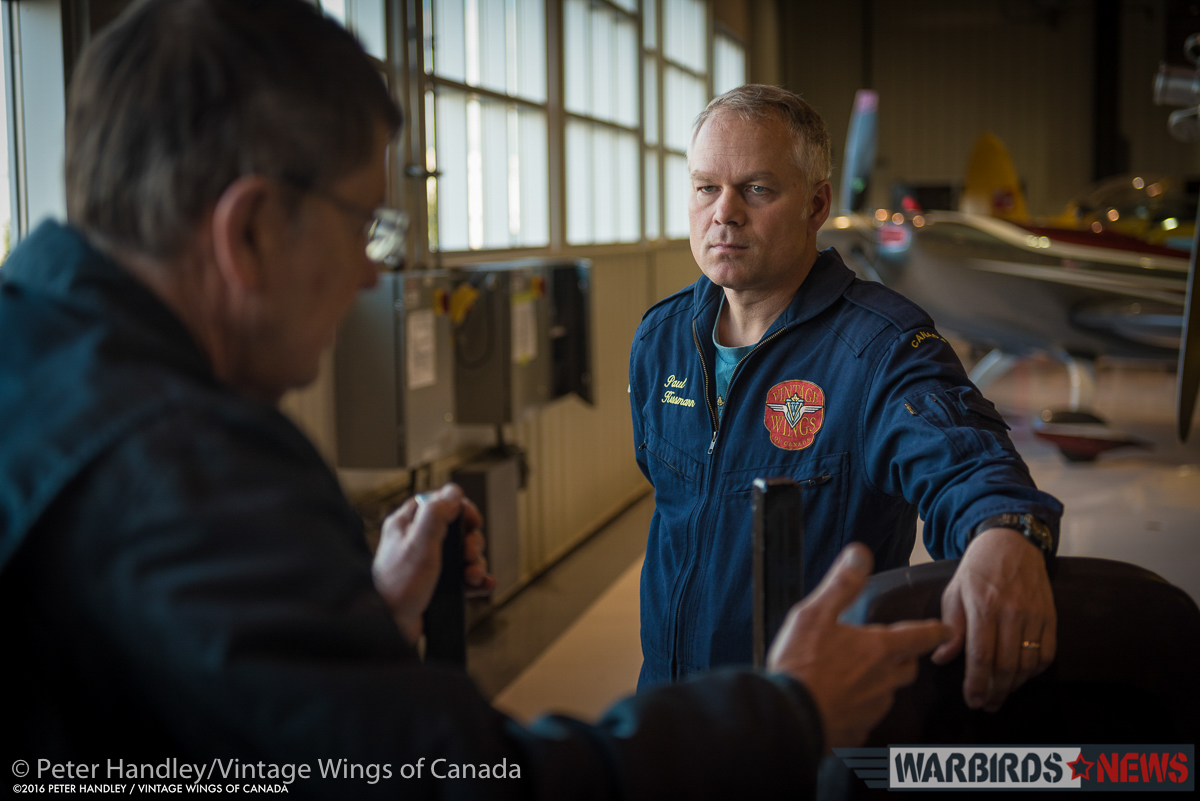
Vintage Wings of Canada’s primary photographer, Peter Handley, flew in the rear seat of the Harvard chase plane, and very kindly provided us with a few of his fabulous photos to illustrate the article.
—————————————————
WN: First can you tell me a little about your current day job? I’d love to know what sort of flights you’ve recently made for the NRC…. just by way of background.
PK: I am currently with the NRC, as Head of Flight Operations/Chief Test Pilot. I am busy flying the fixed wing aircraft – including the Convair 580, Twin Otter, Falcon 20, Harvard, and Extra 300. I was also involved as a test pilot with the Bombardier C-Series certification effort, under contract through NRC. That, and some flying we did last spring in French Guiana chasing tropical convergence zone thunderstorms in the Convair 580 to characterize high altitude ice crystals, have been the two major flying highlights this past 12 months.
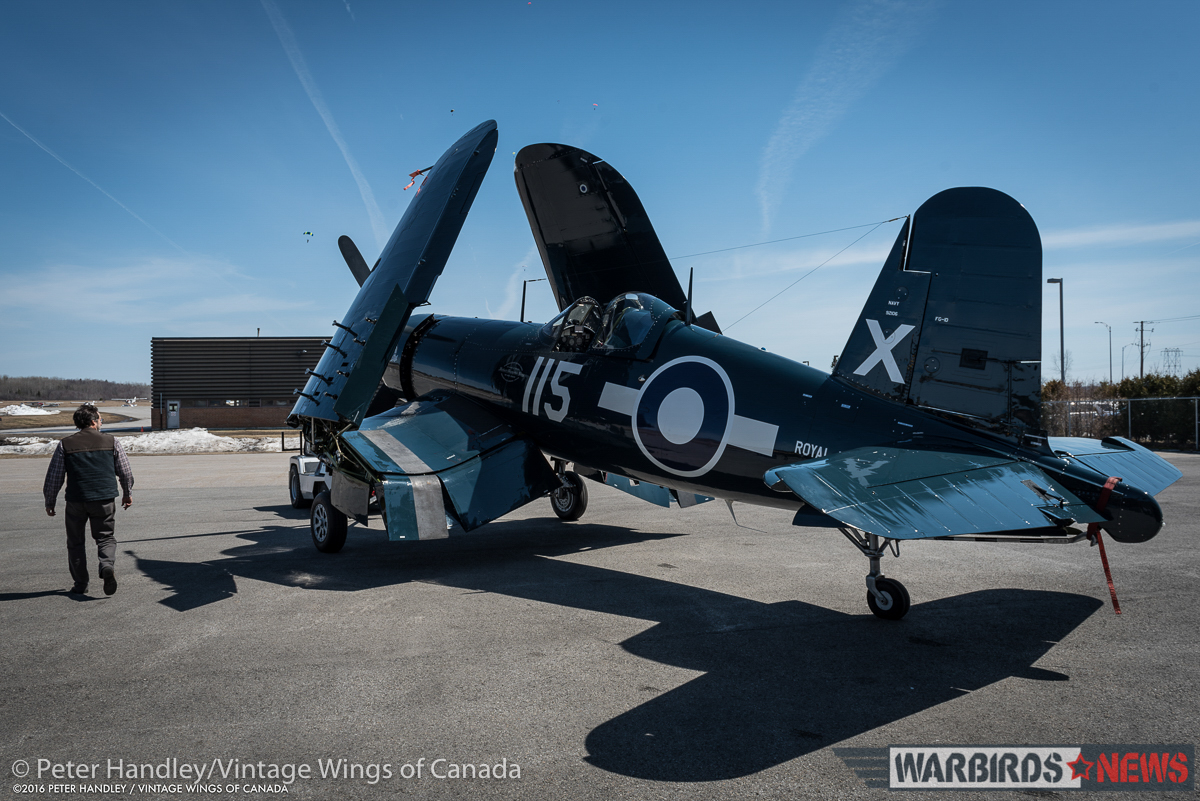
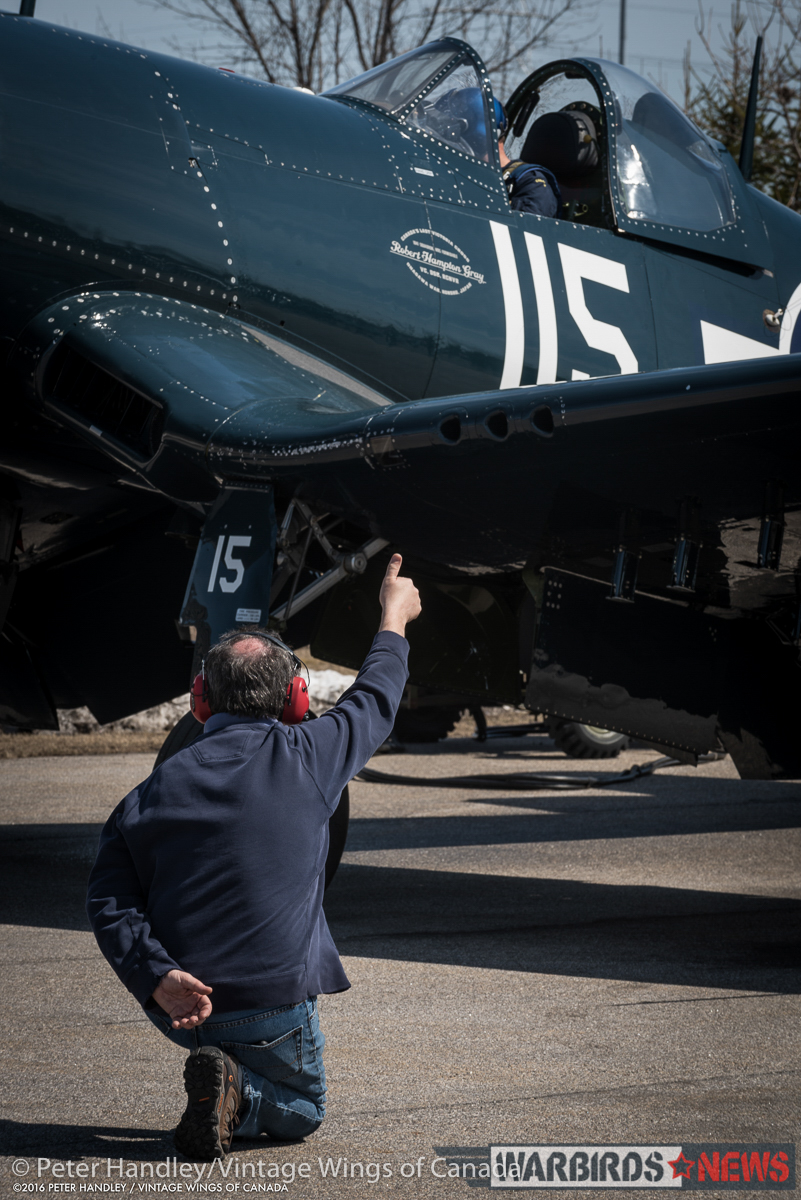
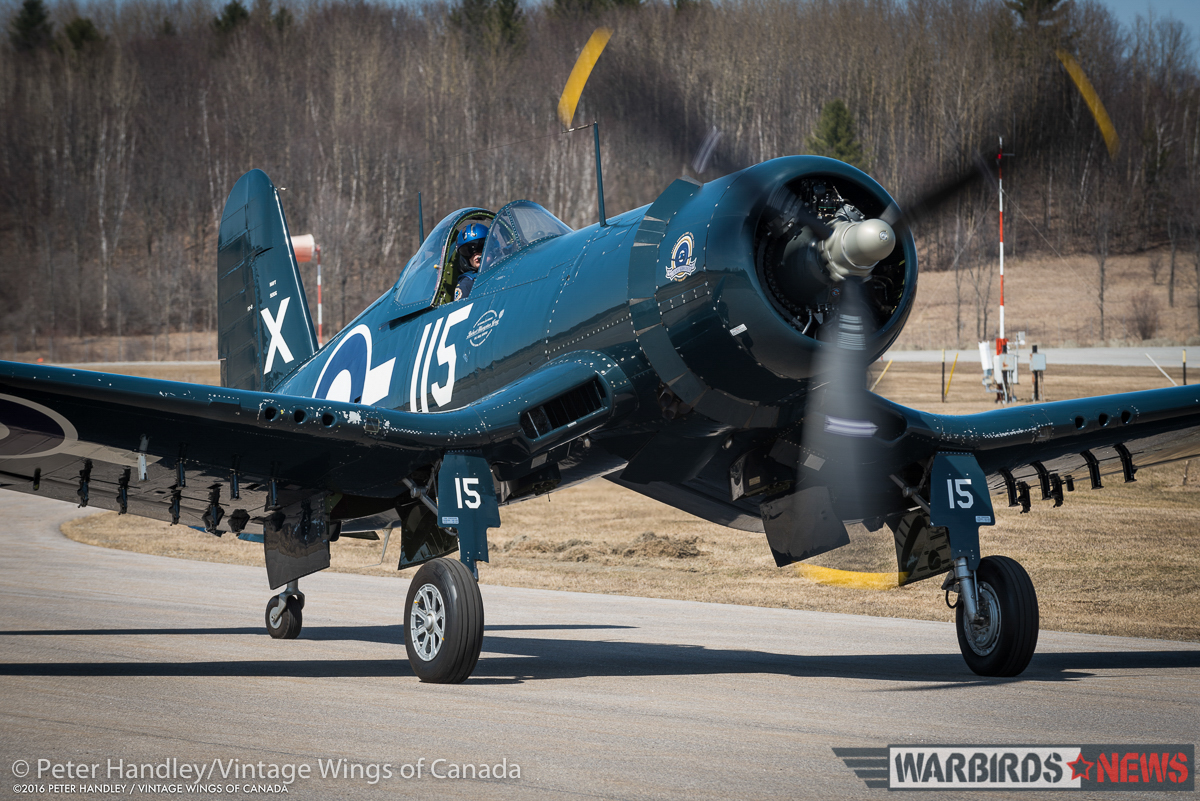
WN: How long have you been flying for Vintage Wings, and which aircraft do you normally fly?
PK: I have been involved with Vintage Wings since 2006 as we started looking for a Sabre jet to contribute to the celebration of Canada’s 100th anniversary of flight. I lead the test effort and worked with a broad and very talented group of DND and VWoC folks to help achieve that milestone. I was also lead on the effort to celebrate the Navy 100th in the Corsair – my other main “baby” at VWoC. I also fly the Harvard and P-40, but have settled mostly on the Corsair of late.
WN: With respect to the Corsair, what was involved with the test flight?
PK: Getting a test flight done on an aircraft that has not flown in a couple of years, and also a first flight back on the type for the pilot is something that has to be done very carefully. It started with preparing and giving ground school at Vintage Wings – a program we are all very proud of at VWoC as we really dig into each aircraft type and provide a world-class product to all who join us. We don’t dumb it down either as the class is our recurrent while also providing a great technical and historical presentation on the aircraft. As the teacher, it is a very comprehensive preparation for getting back into the cockpit. After that there is a detailed discussion with maintenance on all the work that has gone into the aircraft since it last flew, a rigorous walk-around and then a ground run to operate all the systems and look for any problem areas. Finally on a separate occasion as first flight – normally kept short so that if there is a leak or undetectable problem, the short flight duration helps keep it from impacting safety overall. In this case, the planned flight was about 30 minutes. It included general handling of the aircraft, verification of the extension and retraction of the flaps and landing gear, some stalls to double check the predicted and actual stall speeds, and finally an airspeed comparison and altitude check with a chase aircraft – in this case the Harvard flown by John Aitken.
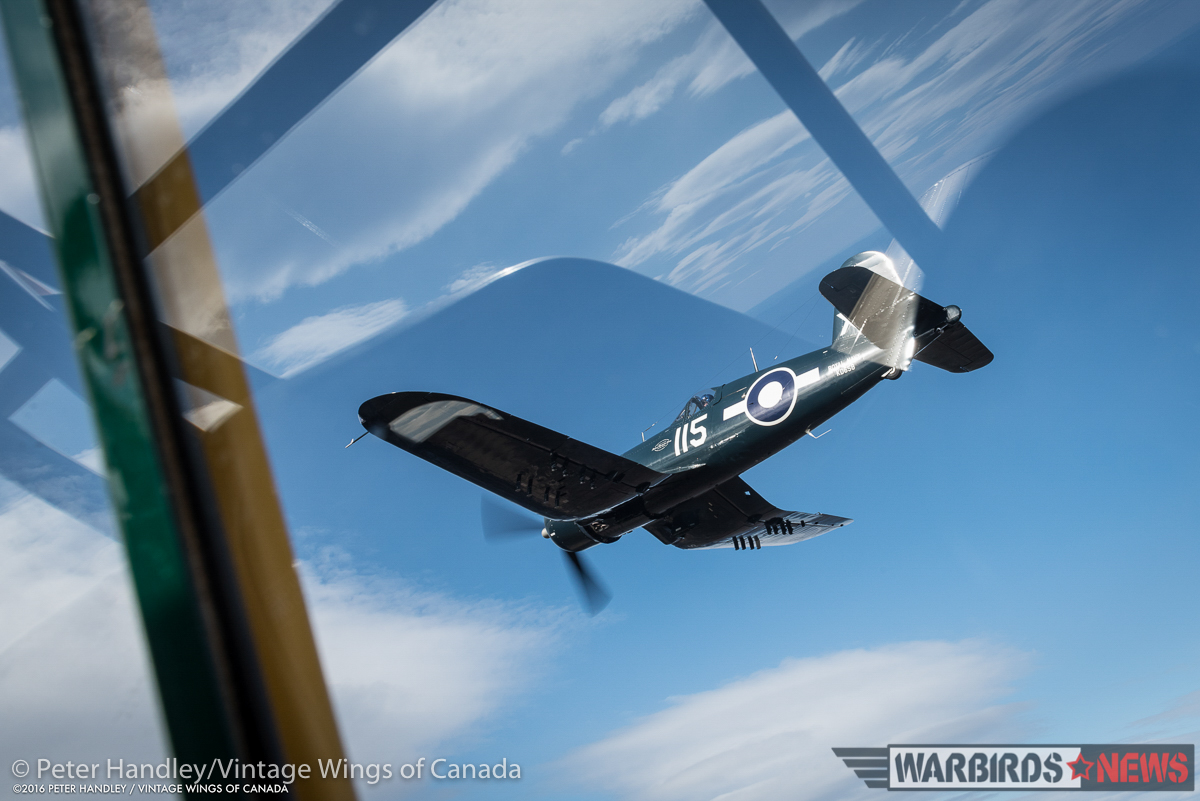
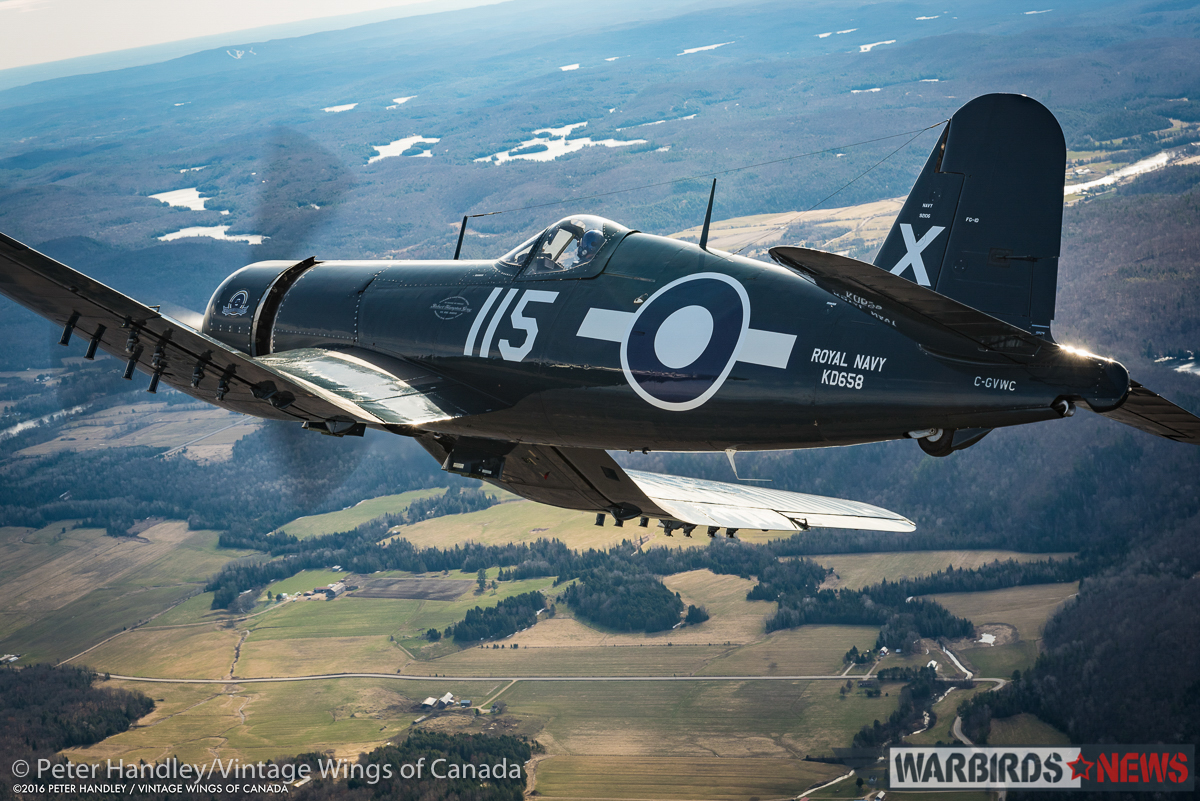
WN: Will you need to do any further flights before clearing the Corsair for normal operations?
PK: I will next take it up to work on getting myself totally comfortable again, and it will include some aerobatics and more advanced maneuvers to get ready for doing some air show work with the aircraft.
WN: Other than a general airworthiness check, what key areas were you specifically monitoring on the flight, and how did you go about evaluating them?
PK: The most important things I monitored on test flight, apart from the handling and fluid leaks, was the operation and proper cooling of the engine. As an air-cooled engine, this should not be a problem, but there could be a secondary issue that will show up as a high temperature issue in the aircraft oil or cylinder head temperature – so it’s important to take the time to watch that stuff closely.
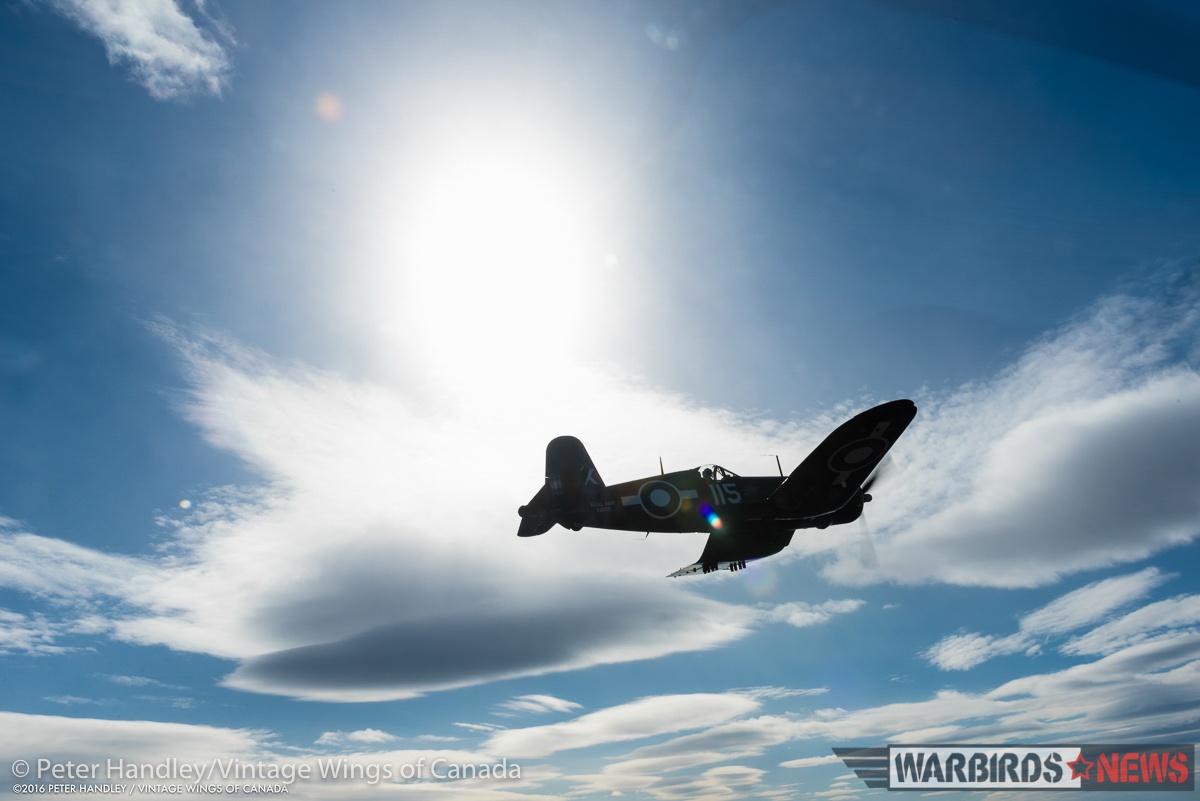
WN: Can you sum up some of the challenges of flying a Corsair, and how it compares to other aircraft in the VWoC collection that you’ve flown?
PK: The Corsair is an advanced aircraft in terms of systems compared to the others – the hydraulics are very complex and many areas exist where this could create other problems as the aircraft is very reliant on hydraulics for just about any secondary control you can imagine. That and management of the various cooling flaps are an attention-getter. But the general handling is fantastic, very carefree and easy to fly on takeoff and airborne. The landing rollout is somewhat more demanding as the aircraft has a poor braking system – likely as it was planned as a carrier aircraft, and is very short – so it really wants to swap ends when the tail gets lowered behind the big front end during the landing roll out.
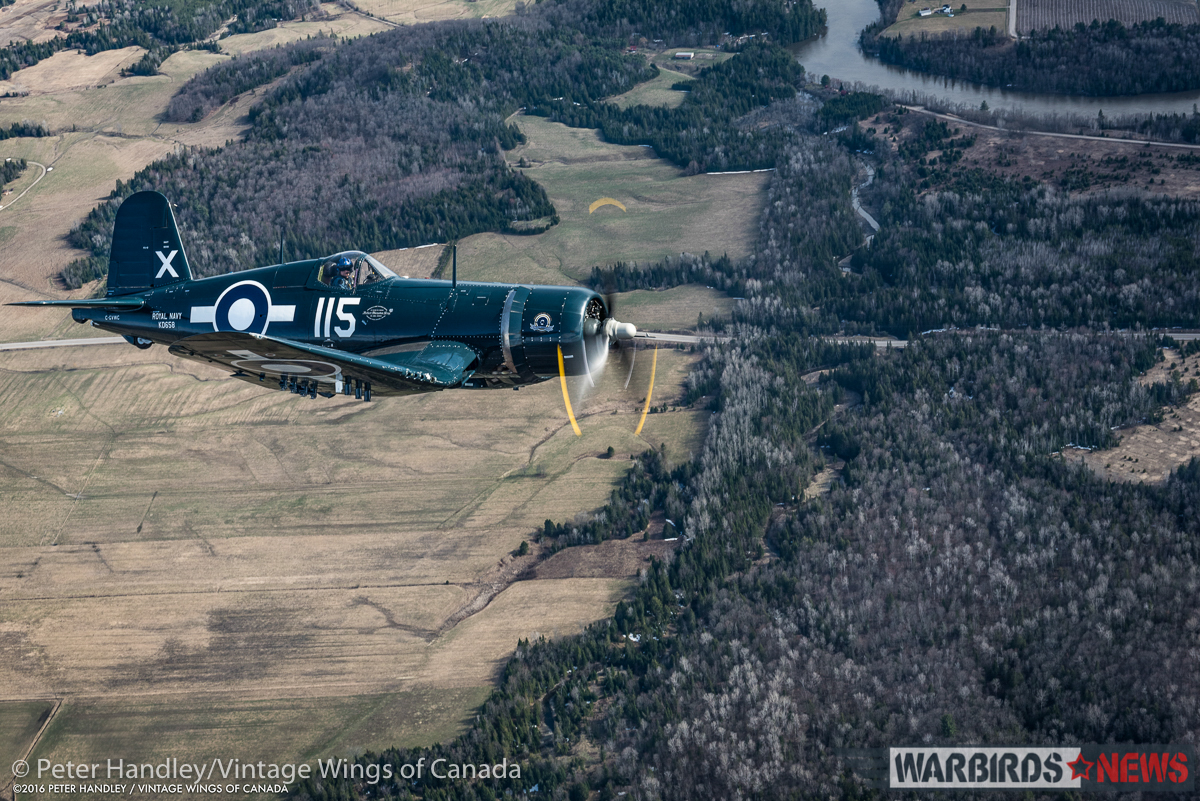
WN: Do you know what events the Corsair is expected to be performing in this year, and will you be the pilot for those events?
PK: The Corsair is planned to participate in our Gatineau airshow on June 30th and the Quinte airshow the weekend prior to that. At this point it will only be on static in Trenton, while it is planned to fly in Gatineau.
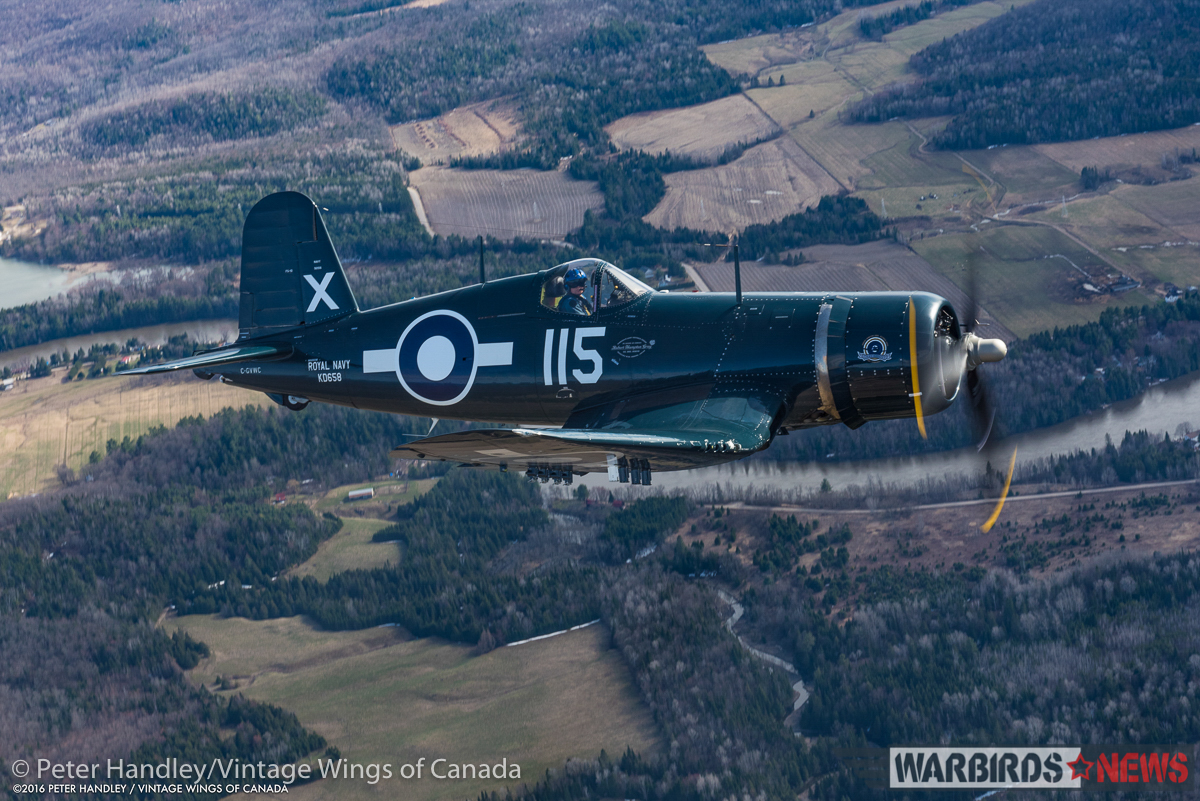
WN: Roughly how many hours do you have in the Corsair, and by extension, other WWII types?
PK: I have not counted my hours, but have somewhere near 75 hours in the Corsair I expect, and a few hundred more mixed between the Sabre, Harvard and P-40. I was fortunate to fly over 2,000 hours in the CF-18 [Hornet], so the fighter world is home to me. Having a chance to fly three premier fighters of their times – the Corsair, Sabre, and Hornet – is truly a chance of a lifetime.
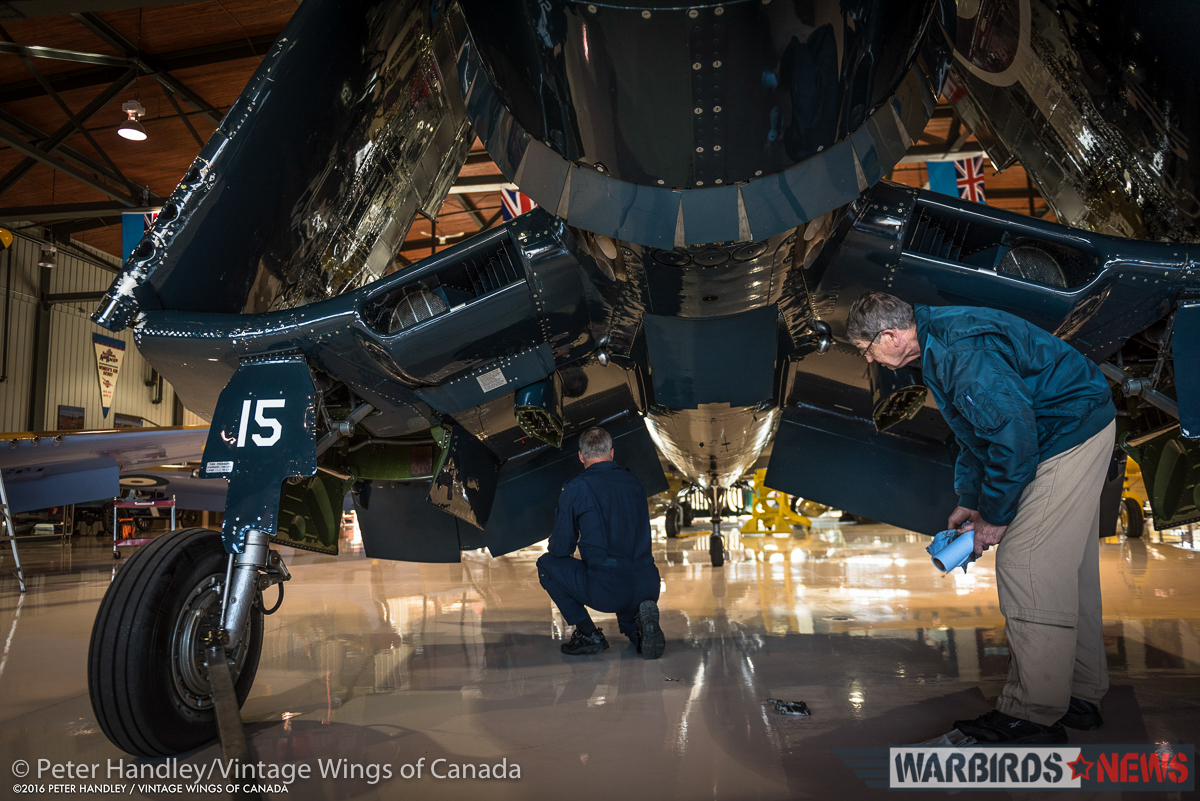
WN: As I feel it’s important to highlight those who work on the ground too, do you know who was primarily responsible for overhauling the Corsair?
PK: Paul Tremblay and André Laviolette were the two primary folks working on the Corsair and getting her ready. They really are top notch at what they do and I very much trust and rely on them to give me the honest scoop on what the status is on any aircraft and what issues they are tracking.
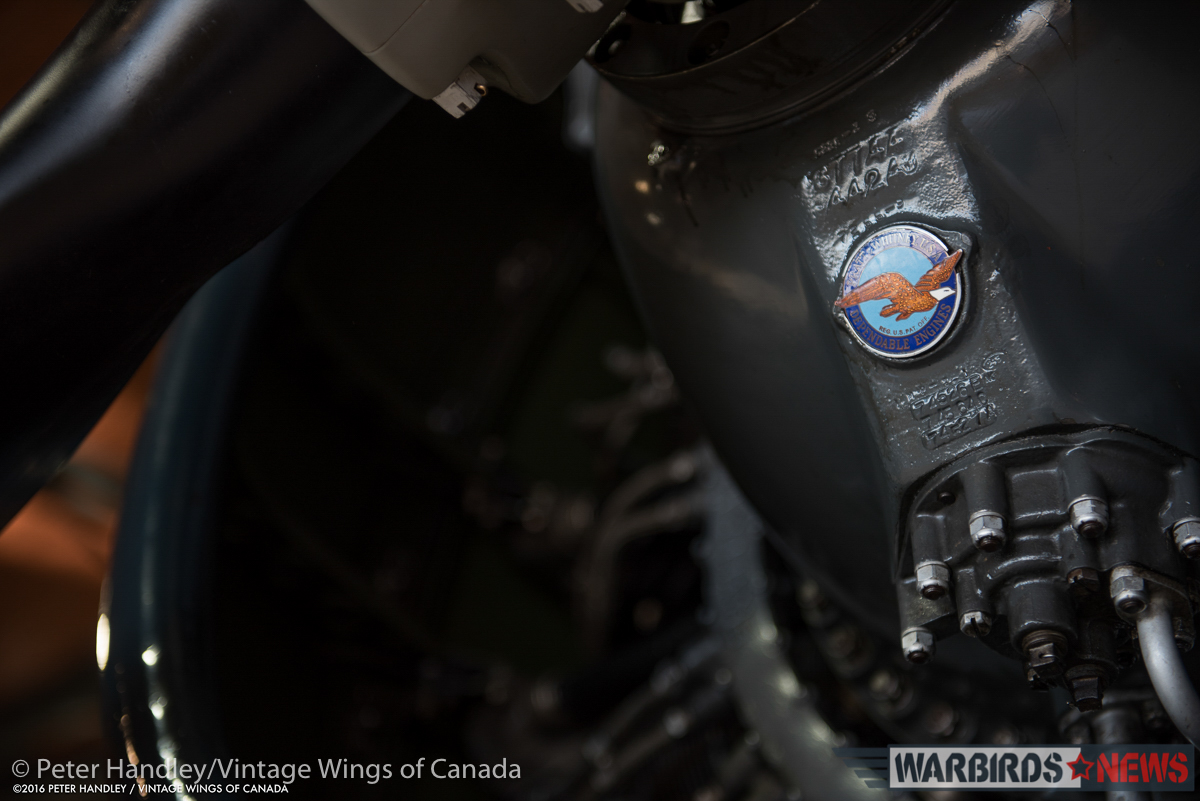
WN: Is there anything you would like to add about your test flight that I haven’t covered in the questions already posed?
PK: A first flight after prolonged maintenance is not something to be taken lightly, it makes it more likely that something may go wrong with the aircraft despite and excellent job by maintenance getting ready, and the pilot is less proficient with the aircraft as they have not been flying it recently. Taking the time to not rush the process is the most important. We did not fly until both Andre and I had done ground runs and made sure we were happy with everything. As it was we found and corrected issues with the brakes and also the flaps – something easily missed if you are in a hurry. That includes weather – we made sure to wait for ideal days to do the tests – no sense in bringing another variable into the game that can raise the risks to the pilot or aircraft.
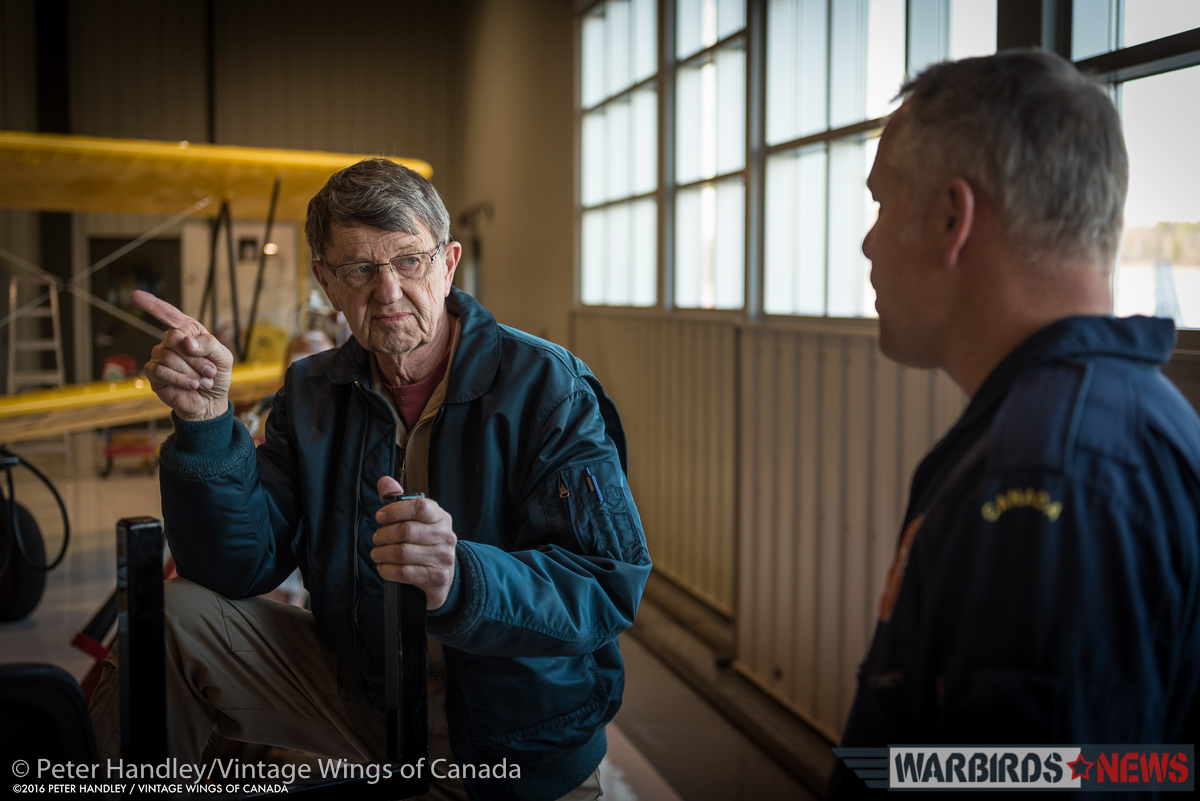
———————————-
WarbirdsNews wishes to offer our great appreciation to Paul Kissman for providing such thoughtful answers to our questions, and of course to Peter Handley for his extraordinary images, and for helping arrange the interview.
In addition, for those of our readers who haven’t heard about Vintage Wings of Canada’s superb Warbird-U program, be sure to check them out. Each year they offer a selection of in-depth ground school weekends where attendees receive formal instruction in the workings and maintenance of the aircraft under study. They are excellent courses, and well worth the reasonable fees whether you are a pilot or simply an enthusiast.
Vintage Wings of Canada will also hold their Wings Over Gatineau air show on June 30th. It is always a crowd-pleaser. Paul Kissman will be performing his aerobatics routine in the Corsair, the CF-18 demo bird will be in the air, as will the Snowbirds aerial demonstration team. An A-4 Skyhawk will also be on hand. For more information, check out the official website www.wingsovergatineau.ca.
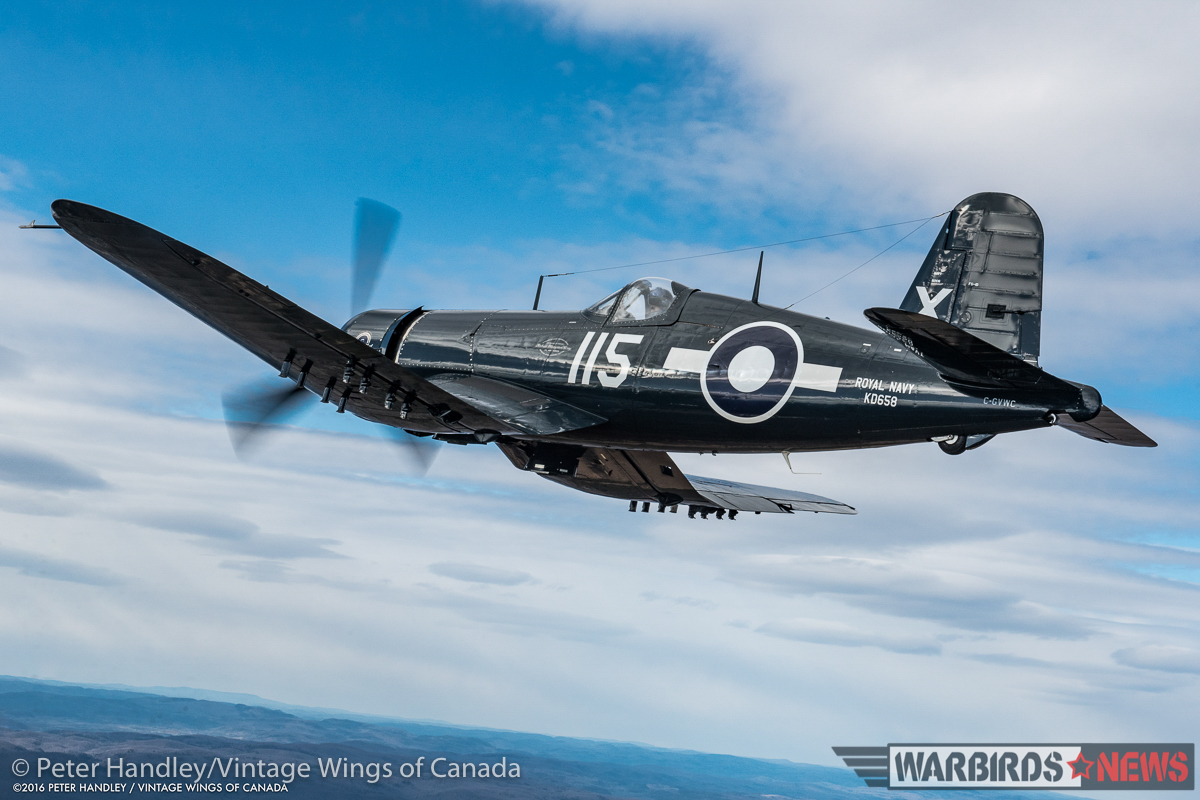

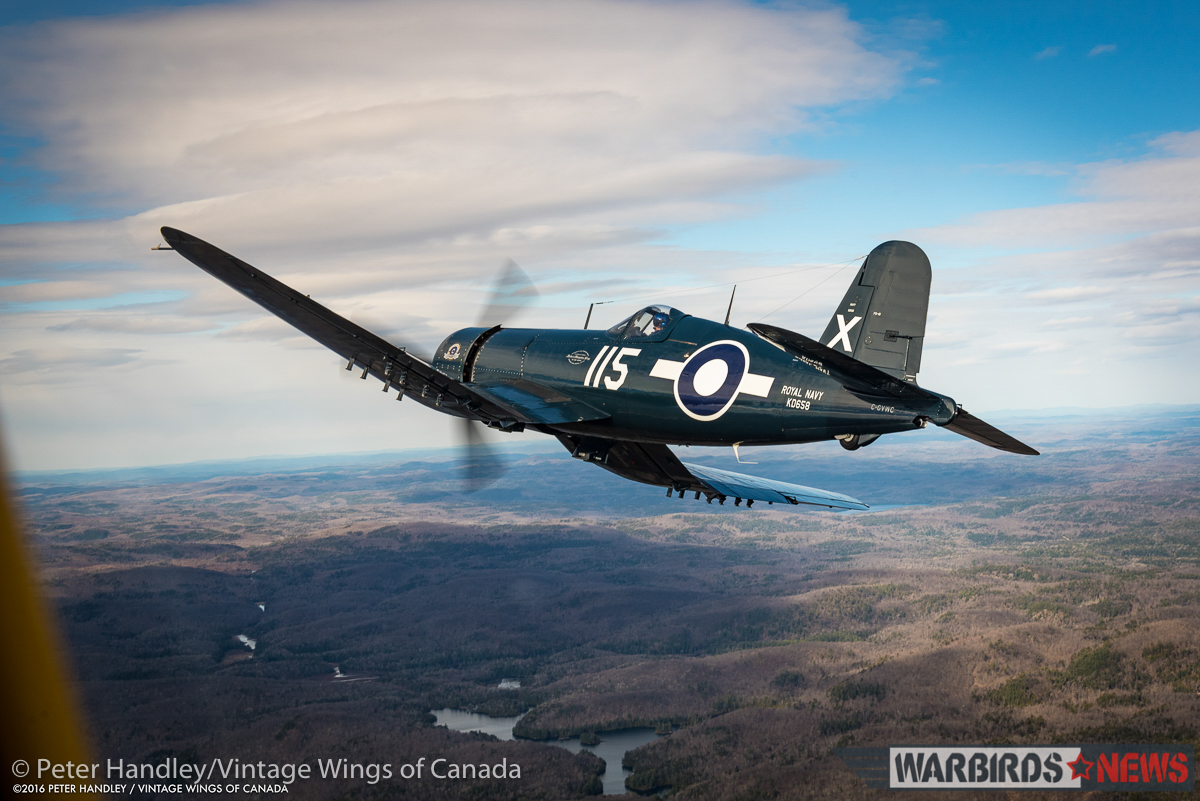

This was and still is a hell of a beautiful airplane, its why Pappy
Boyington loved this aircraft. Behind skilled pilots like Boyington and other ace’s that flew this beautiful plane,the Japan zero’s didn’t have a chance.
What a beautiful airplane, and a terror to boot. If I were in a bamboo fighter and saw one of these bad boys coming over the horizon I think I would just jump out !!